When was the last time you had fun working out — the kind of fun that causes you to lose track of time, forget your to-do list, and laugh out loud?
If you’re like many exercisers, the answer probably is way too long ago.
Primal Move is a game-based, play-oriented exercise system founded by kettlebell instructor and fitness coach Peter Lakatos. Having a good time is an unavoidable, essential part of the program.
“We’re seeking to improve physical and mental well-being through playful movement,” Lakatos says. “Fitness is a natural side effect.”
Primal Move teaches full-body movements that primarily use your own body weight as resistance. Over the course of a single workout, exercises become increasingly complex: You may crawl and roll like a baby; jump, squat, and invert yourself like a dancer; even compete with others via games, races, and cooperative activities.
“Give somebody a game,” says Primal Move national instructor Adrienne Harvey, RKC II, who designed this workout, “and they’re suddenly much freer in the way they move.”
The Workout
Perform all moves in an open space, such as a fitness room or outdoor park, or on a basketball or racquetball court. Use a soft exercise mat for padding.
During the first few workouts, move slowly, paying close attention to form, and rest as needed. Minimize momentum, and breathe easily and deeply throughout. If a move feels awkward, slow down. Don’t push beyond your capabilities.
As you become more comfortable with each exercise, perform them as a continuous, flowing circuit. Experiment with different movement speeds, but never sacrifice form. Moving slowly and attentively leads to the biggest improvements in mobility and coordination.
Quadrupedal movement is great for your joints, upper-body strength, core stability, and coordination. If you feel silly skittering around on all fours in public, remember that anyone who gawks probably just wants in on the fun. “There’s definitely an infectious quality to Primal Move workouts,” says Harvey.
1. Figure-Four Switches
Improves coordination and body awareness; mobilizes the hips, spine, and ankles.
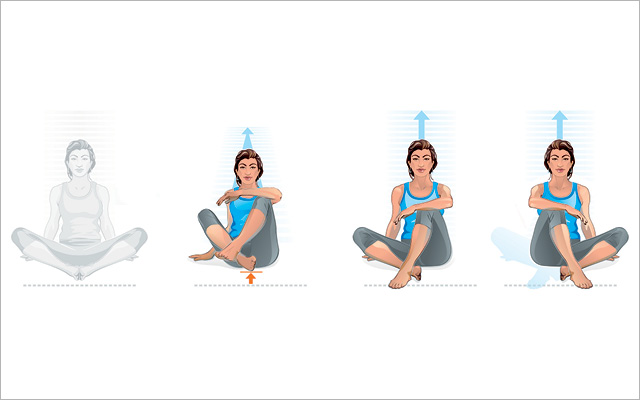
- Sit with your back straight and place the soles of your feet together so you’re in a butterfly position, with your knees spread wide. Place your hands on the floor behind you for support.
- Place your left foot flat on the floor a few inches in front of your right, and rest your left arm on top of your left knee.
- Roll backward slightly, lift your feet off the floor, and switch the positions of your feet.
- Roll forward and sit up with your spine long, this time with your right foot flat, and your right arm resting on your right knee.
- Perform five or more reps per side.
2. Rocking to X-Lift to Crawling
Improves shoulder stability, hip and ankle mobility, and core strength. The rocking motion also sharpens the vestibular system, which contributes to balance and spatial awareness.
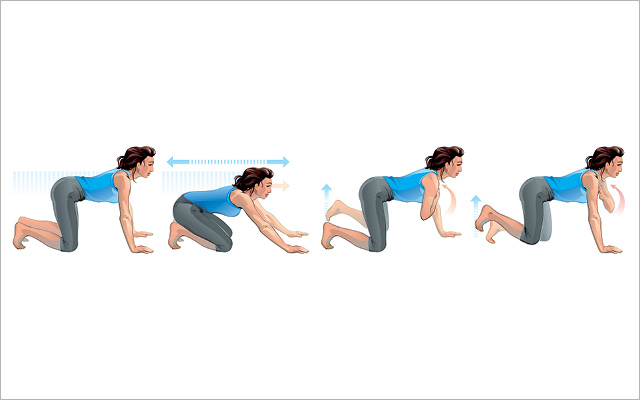
- Assume a “creeping” position: hands, knees, and balls of feet on the floor; spine long and abs engaged. Rock back and forth four to six times.
- From the creeping position, lift your right hand and touch your left shoulder. At the same time, raise your left knee and foot a few inches off the floor. That’s one “X-lift.” Alternate sides, performing four to six X-lifts on each side.
- Using the same alternating hand-and-foot pattern, crawl forward four to six steps, then backward the same distance. Perform four to six trips forward and backward.
3. Plank to Frog to Crab X-Lift
Develops coordination, strength, shoulder and core stability, and hip mobility.
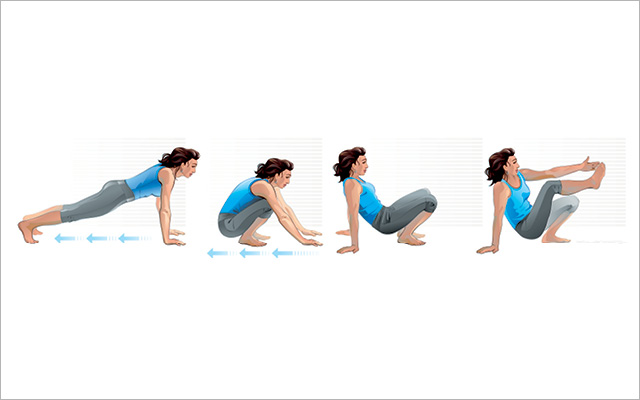
- From a high plank position, walk your hands back toward your feet and bend your knees to assume a low-squatting “frog” position. Keep your feet flat and hands on the floor.
- Reach back and place your hands flat on the floor in a “crab” position.
- Keeping your hips up, raise your left hand and right foot off the floor, and touch palm to sole.
- Alternate sides for two to four hand-to-foot touches on each side.
- Walk your hands forward, moving through frog, to return to the original plank position.
- Perform two to four full cycles.
4. X-Roll
Improves full-body and cross-core coordination, as well as helping to prevent injuries.
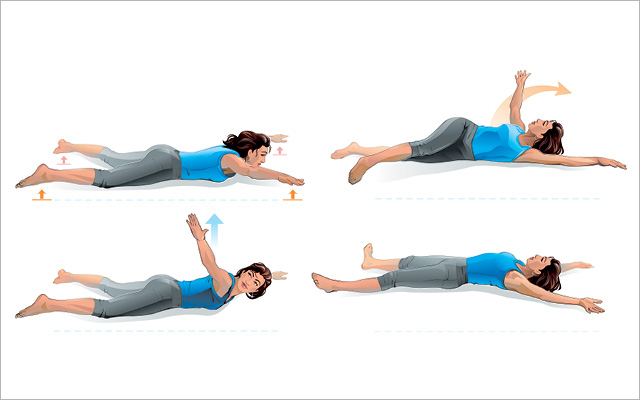
- Lie face-down in a prone position and spread your arms and legs so your body forms an X.
- With control, lift your arms and legs. Turn your head to the right, looking up and over your right shoulder, and reach your right hand toward the ceiling.
- Slowly roll onto your back with control.
- Reach across your chest with your right arm and roll back to a prone position.
- Repeat, but this time look over your left shoulder and roll to your right.
- Perform as many repetitions as you wish, doing an equal number in both directions.
5. Plank Jump to Silverback to Lateral Silverback
Develops coordination, upper-body pushing strength, explosive power, and mobility.
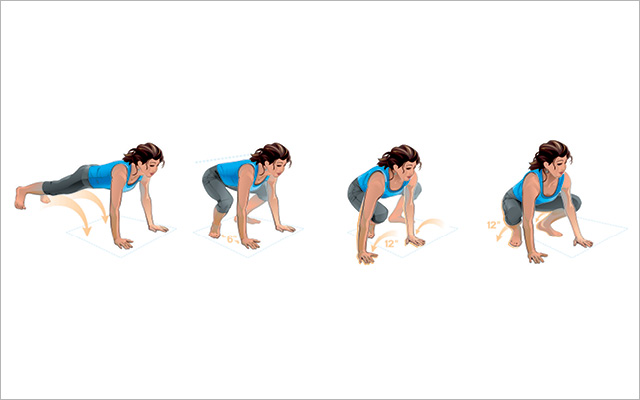
- Assume a plank position.
- Keeping your back flat and spine long, carefully jump your feet forward until you are in the “silverback” position: feet about 6 inches behind your hands, hips back, knees bent, feet flat.
- Lift both hands slightly off the floor, and then place them on the floor about 12 inches to the right.
- Jump your feet to the right, bringing them up to your hands to complete a lateral silverback.
- Repeat four to six more times to the right, and then switch directions, performing four to six moves to your left.
- Jump your feet back to the plank position.
- Perform two to four total repetitions of the pattern.
Make It Easier, Make It Harder, Do It In A Group
1. Figure-Four Switches
Make It Easier: Use both hands for support throughout the movement (don’t slouch!).
Make It Harder: Perform the movement in slow motion, precisely coordinating the shift of weight from side to side and varying the distance you roll backward on each repetition.
2. Rocking to X-Lift to Creeping
Make It Easier:
- Slow down throughout the exercise, taking small steps and peforming each move slowly and precisely.
- Remain in the creeping position, knees and feet on the floor, and don’t move forward or back as you perform the X-lifts.
Make It Harder: From the crawling position, lift your knees a few inches off the floor and crawl forward and back with only your hands and the balls of your feet on the floor.
In a Group: Perform crawling races or a round of “Touch the Hand”: Pair up, and face your partner in the crawling position. Remain on all-fours and attempt to tap your partner’s hand while dodging his or her advances. If you’re tagged, perform a pushup.
3. Pushup to Frog to Crab X-Lift
Make It Easier: When moving through the frog position, walk your hands forward or backward as far as you can comfortably, and then stand or sit to move into the pushup or crab position.
Make It Harder:
- Before the crab X-life, lift your hips high so that your thighs and torso are parallel to the floor. Lower your hips and continue the sequence.
- After the crab X-lift, perform a “crab walk” taking five or six steps in any direction (forward, backward, side to side) before returning to the pushup position.
In a Group: Crab-walking races moving forward, backward, or side to side.
4. X-Roll
Make It Easier: Slow down, and work with low effort, but don’t get discouraged if you can’t do it your first few times out!
Make It Harder:
- Lead the roll with your legs.
- Roll with minimal help from your arms or legs.
- Experiment with different speeds, from slow motion to fast paced.
In a Group: Rolling races across the floor.
5. Pushup Jump to Silverback to Lateral Silverback
Make It Easier:
- Perform fewer reps.
- Walk—don’t jump—your feet forward into the silverback position.
Make It Harder:
- Perform a pushup after returning to the pushup position.
- Move side to side in slow, controlled motion, shifting your weight fully onto your hands (you will be standing on your hands briefly).
- When your feet are in the air, “clap” them together slowly behind you.
This originally appeared as “Primed to Move” in the July-August 2013 print issue of Experience Life.
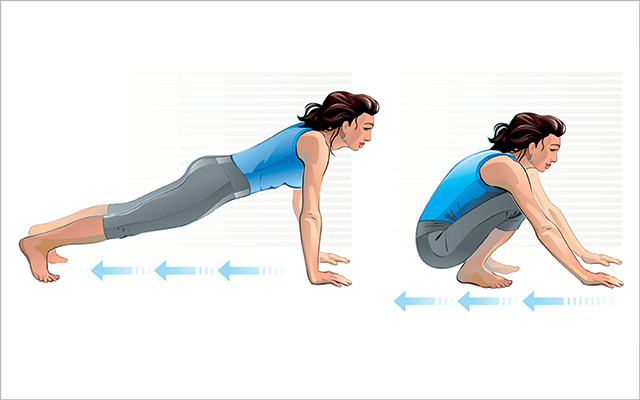
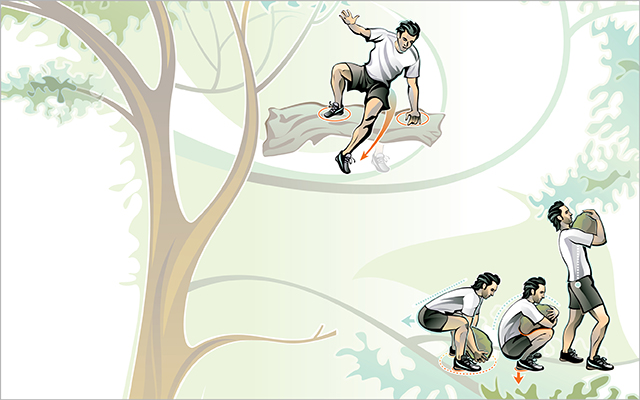
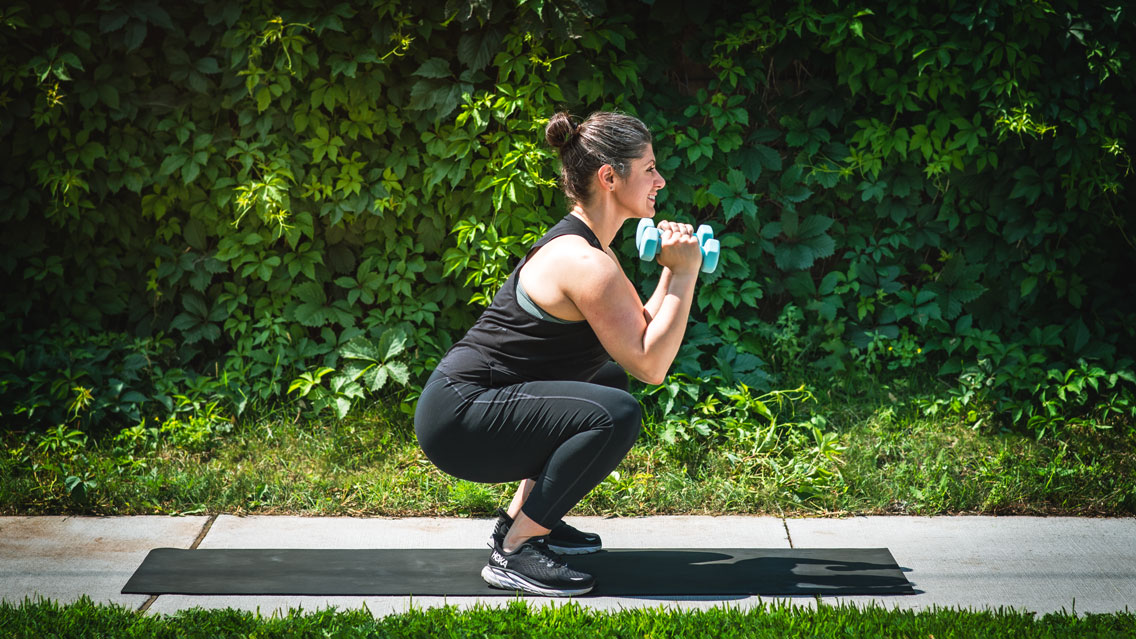

This Post Has 0 Comments